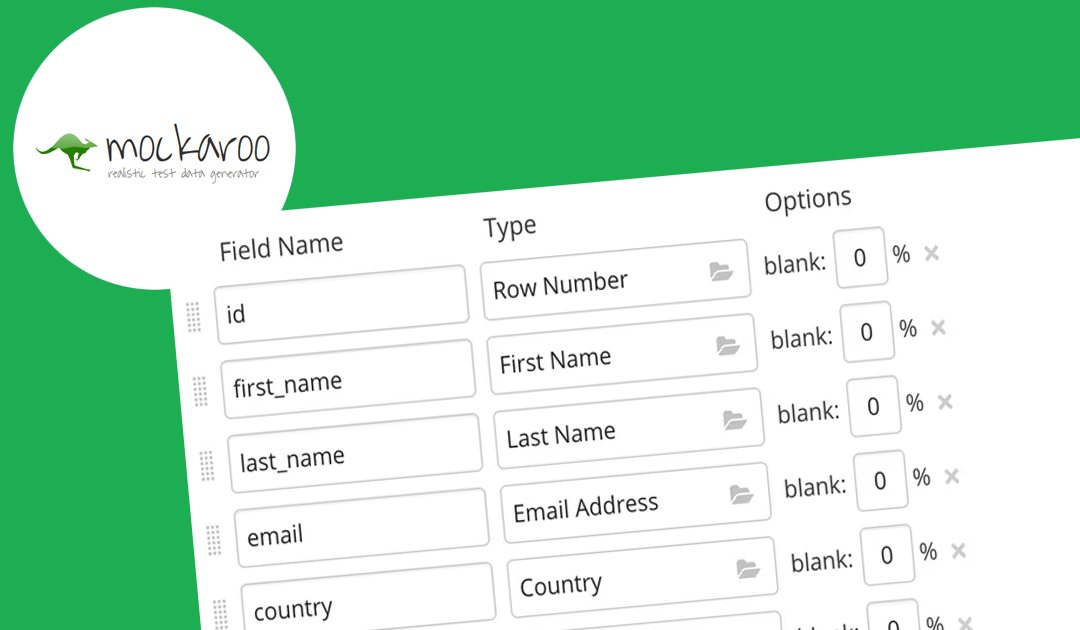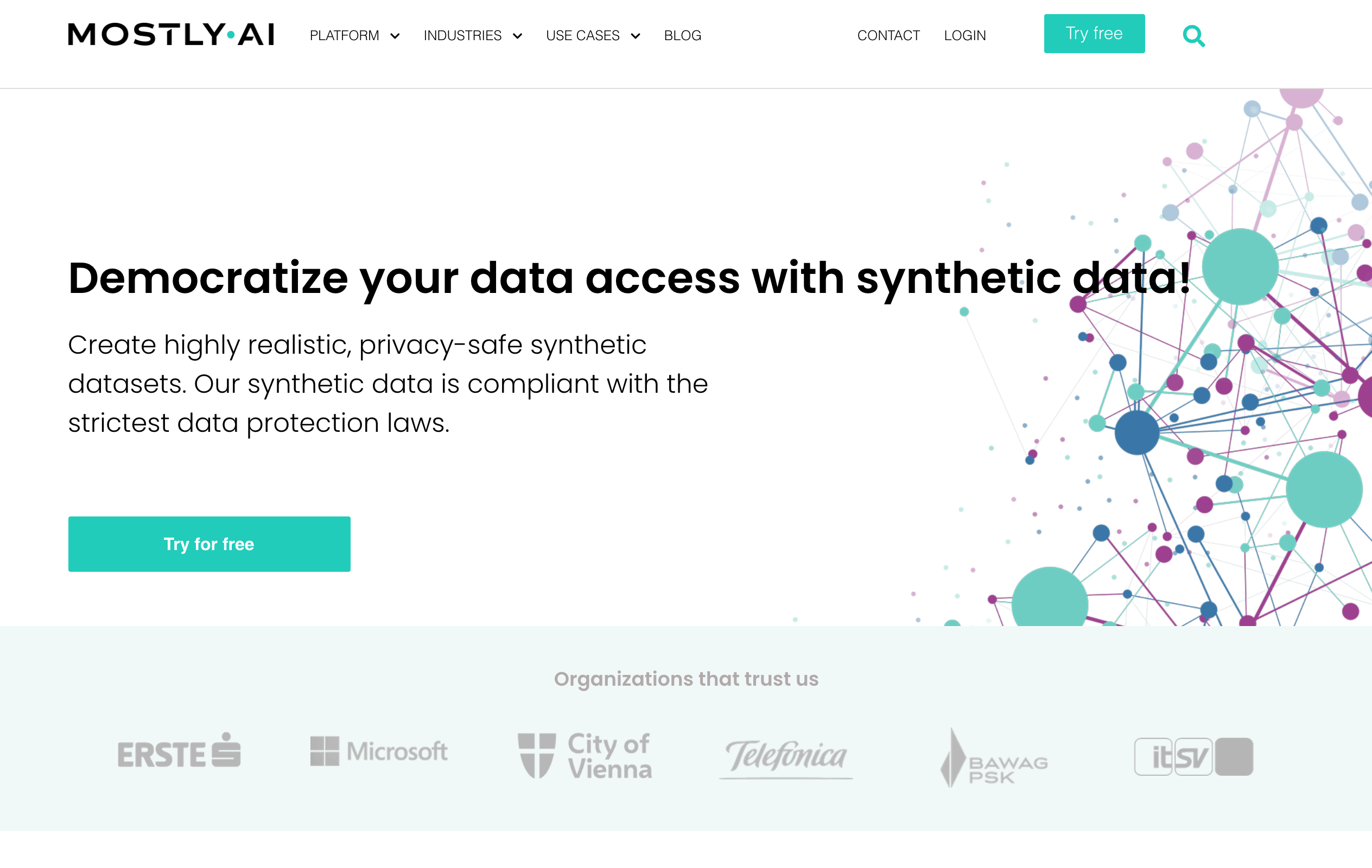Test Data Generators have become unsung heroes in the software development world that often goes unnoticed. Technically, test data generators play a pivotal role in ensuring the quality and reliability of applications. Though operating behind the scenes, they are instrumental in simulating real-world scenarios and helping developers identify potential issues before they reach the end-users.
An automated test data generation may offer many benefits, but remember, it is just another software application toolkit. Like other software platforms, it may or may not have all the features you need or always generate the correct data. However, if you are willing to try automated test data generation, it could be a great way to boost your business or your workplace team’s productivity.
Automated Test Data Generation, commonly known as ATDG, helps to create different test cases in an automated fashion, apply them, and then record and summarize the collected data/result. There are many techniques used for this purpose. Each of them is different from others due to one reason or more. The method used for test data generation is adapted, keeping many things in mind.
Such as the software size, nature, type, structure, architecture, schedule, and budget. ATDG has been in use for many decades. The trends are being changed in their purpose. People from different software development areas use/choose other ATDG techniques. Let’s journey to understand the significance of test data generators and why they’re the silent champions of software testing.
Understanding What Random Test Data Generators Offer Professional Analysts
To enumerate, Test Data Generators are tools that produce random or specific data sets for testing purposes. Realistically, this database can mimic real-world scenarios, ensuring that software applications are tested under various conditions, from typical user interactions to edge cases. Technically, the multi-phased activity of ATDG involves multiple techniques for each of its phases.
Automated Test Data Generation (ATDG) is an activity that, in the course of software testing, automatically generates test data for the Software Under Test (SUT). It usually makes the testing more efficient and cost-effective. Test Data Generation (TDG) is crucial for software testing because test data is one of the critical factors for determining the quality of any software test during its execution.
As the IT industry always cares for its time, ATDG is a crucial thing to be used in software development. However, every tomorrow is different concerning Today in this industry. So, the trends for the future are also being changed, as discussed in the report. As forefathers of software development and testing were not so much Pampered, they used to use the Command Line Interface.
This was also coupled with many other things not much encouraged by this generation of developers and testers. So, the significant trends in ATDG will likely have a GUI in the future. Notwithstanding, Agile Methodology in website design and applications development, UML generation, and many other modern phenomena are also being introduced and required in ATDG.
Getting To Know How A Random Tes Data Generator Helps In Analytics
A Random Data Generator is also known as a JSON generator, dummy data generator, CSV generator, SQL dummy, or mock data generator. To give you an idea of how they work, RNDGen will serve as an excellent reference. It’s a free, user-friendly tool for generating test data. The data creator uses and customizes an existing data model to create a mock table structure for your needs.
The RNDGen Test Data Generator allows you to easily create dummy data for tests representative of real-world scenarios, particularly with the ability to select from a wide range of fake data details fields, including name, email, location, address, zip and vin codes, and many others. You can customize generated dummy data to meet your specific needs. See, it is as simple as that!
RNDGen random data generator is a free service that easily generates large amounts of randomized test data—100+ types of dummy data templates. With just a few clicks, you can quickly create thousands of fake data rows in different formats, including CSV, SQL, JSON, XML, and Excel. In that case, it’s the ultimate tool for all your data generation needs instead of standard mock datasets.
The essential usage tips:
- Create unique field names: When selecting the fields for data generation, choose unique field names for each column. Avoid using the same field name for multiple columns.
- Choose the suitable file format: Depending on what you are using the data for, choose the file format that best suits your needs. For example, CSV or Excel may be the best option if you are working with data analysis. JSON or XML may be better for the web.
- Dummy Data for Excel: To prevent accidental changes to your Excel dummy data, you can protect the cells containing the data by right-clicking on the selected cells or menu item “Format.” You can use the RANDBETWEEN() function directly in the dummy file.
- Incorporate Realistic Field Values: To generate meaningful JSON data, incorporate realistic field values. For example, the JSON data for a user profile may include fields such as name, email, age, and address with actual values, enhancing testing and analysis.
In addition, you can also define mock data types and formats. Determining each column’s fake data types and design formats is essential when generating CSV dummy data. This ensures consistency and compatibility with downstream processes relying on specific data types. For example, if a column represents dates, ensure the generated data adheres to a specific date format.
How To Choose The Best Test Data Generator Tool For Testing Purposes
As mentioned, ATDG is crucial for testing because test data is a critical factor in determining the quality of a software test during its execution. ATDG reduces testing time by an order of magnitude and presses the rising cost of test data generation downwards. However, purchasing and installing automated application software tools may incur extra charges at an initial stage.
But it might be better to accept a short-term penalty in the hope of long-term rewards. It automatically generates test data for a SUT during software testing. Test data generation is a tedious, expensive, and error-prone process if it is done manually. Automation in test data generation could curtail software application platforms’ testing expenses and increase testing reliability.
For these reasons, automated test data generation has remained a topic of interest for the past four decades. In other words, software testing ensures the right software product to achieve complete customer satisfaction. With that in mind, the test data generator utilizes the information generated by the program analyzer and path selector. Next, the path information is obtained.
TDG aims to find input values that will traverse a specific path. This is achieved by finding the path predicate and solving it in terms of input variables. Various search methods can be applied, such as alternating variables, simulated annealing, and different heuristics based on equation rewriting. In particular, to help solve the path predicate representing a system of inequalities.
Factors to note when selecting the best data generator:
- Purpose: Understand why you need the data. Is it for software testing, database population, or another specific use?
- Support: Ensure the tool can generate the required data types, including names, addresses, or more complex structures.
- Customization: The ability to tailor the data to your specific requirements is crucial.
- Volume: Depending on your testing needs, you might require a tool to generate large amounts of data quickly.
- Compliance: Ensure the tool adheres to data privacy regulations and doesn’t compromise accurate user data.
- Usage: A user-friendly interface can speed up the data generation.
- Cost: While some tools are free, others might offer more advanced features at a price.
Be that as it may, you must determine your budget and evaluate the value the toolkit provides.
The key features:
- Diverse Data Types
- Seamless Data Masking
- Enhanced Reliability
- Improved User Experience
- Faster Time-To-Market
A Program Analyzer helps to analyze the source code automatically. The program analyzer takes a piece of software as input and produces the necessary data to be used by the path selector and test data generator. Control flow graph, data flow graph, data dependence graph, program dependence graph, and extended finite state machines are most commonly used for analyzing programs.
The Topmost Recommended Test Data Generators For Software App Testing
In other words, automated test data generation is an essential area of research for reducing the cost of software development. Test data generation is done to satisfy functional, non-functional, and business requirements. Some non-functional requirement testing can be done only by automation, where it is not possible manually. As the name suggests, a hybrid method is a static and dynamic mix.
This mixture could be in the form of side-by-side use, probably solving some tasks using static methods and some by using dynamic methods. Or it could be a synthesis of static and progressive processes. Such an ATDG technique is reported by Meudec Christophe, where symbolic execution is used for an active approach—many methods are empowered by automated test data generators.
Such as follows:
- Functional Testing
- Structural Testing
- Random Approach
- Path Oriented
- Goal Oriented
- Intelligent Approach
- Static Methods
- Dynamic Methods
- Hybrid Methods
A comparative study of different test data generation implementation techniques can help determine the best methods for testing applications and software programs. For instance, we can consider testing object-oriented software using UML modeling. Test data generation for recursive programs and procedures/functions, agile software development, GUI testing, and more.
As a rule of thumb, we must find advanced innovative support procedures for most testing software to automate the testing process. Several test data generation techniques, such as random test data generator, path-oriented test data generator, goal-oriented test data generator, and intelligent test data generator, have been automated. Below are the best test data generators for testing.
1. Mockaroo
Generally speaking, Mockaroo is a free test data generator and API mocking tool—it lets you create custom CSV, JSON, SQL, and Excel datasets to test and demo your software. It’s hard to assemble a meaningful UI prototype without making actual requests to an API. By creating genuine demands, you’ll uncover problems with application flow, timing, and API design early, improving the quality of both the user experience and API. With Mockaroo, you can design mock APIs; You control the URLs, responses, and error conditions. Parallelize UI and API development and start delivering better applications faster today!
Pros:
- Completely free and without registration.
- Accessible from any browser without installation.
- Provides dummy data that mirrors real-world scenarios.
- Allows for customizable dummy data generation on your own.
- Generates unlimited fake data rows in various formats: CSV, SQL, JSON, XML, and Excel.
- Supports a wide range of data types, from names and addresses to more complex data structures.
- User-Friendly Interface
Cons:
- Limited advanced features compared to some other tools on the list.
Price: Free.
2. MOSTLY AI
For your information, the MOSTLY AI is a synthetic data solution that not only generates random data but ensures that the data is realistic and maintains the statistical properties of the original dataset. MOSTLY AI was the first to develop and deploy synthetic data in enterprise settings.
Pros:
- Uses advanced AI models to produce highly realistic data.
- Generates data adhering to privacy regulations, ensuring no user data is compromised.
- Generates data closely mimics real-world data, making it ideal for advanced testing scenarios.
- Suitable for generating large datasets without compromising on data quality.
Cons:
- It might be overkill for simple data generation needs.
Free Plan: Up to 100K rows per day.
Paid Plan: From $3/credit (1 credit per 1 million data points)
3. Datafaker
To enumerate, Datafaker is a random data generator tailored for Java and Kotlin developers. It boasts a wide range of data providers, making it a versatile tool for various applications. Generating fake data has never been easier. Create a phony data scheme for your JVM programs within minutes using the wide range of more than 200 Datafaker data providers.
Pros:
- With over 200 data providers, users can generate diverse data.
- Explicitly designed for Java and Kotlin, ensuring seamless integration with JVM programs.
- Users can define their data structures and patterns for more tailored data generation.
- It’s designed for quick and straightforward data generation.
- Accessible from any browser without installation.
- Offers a wide range of data types for various scenarios.
Cons:
- It is limited to JVM languages, which might not cater to developers using other programming languages.
Price: Free.
4. Redgate SQL Data Generator
By all means, Redgate SQL Data Generator is designed to generate realistic test data specifically for SQL databases. The SQL Data Generator is a fast, simple tool for generating realistic test data. It can instantly provide generators based on table and column names, and field length.
Pros:
- It is tailored specifically for SQL databases, ensuring relevant data generation.
- Can anonymize sensitive data while retaining realism.
- Automatically recognizes database schema, streamlining the data generation process.
- Can generate data based on table and column names, data types, and existing constraints.
- Capable of quickly generating large volumes of data.
Cons:
- Specific to SQL databases, limiting its use for other types of databases.
- Being a premium tool, it might be cost-prohibitive for some users.
Price: 14-day free trial and $264 per user for a 1-year subscription.
5. Randat
Randat is an online random data generator for webmasters that allows its users to generate tables with random personal information. It’s a simple tool for educational purposes and basic data generation needs. The free random data generator tool allows you to develop online a table with unexpected personal details: name, age, occupation, salary, etc.
Pros:
- There is no steep learning curve; users can start generating data immediately.
- Generated tables can be exported as XLS, XLSX, or CSV files.
Cons:
- The tool’s limitation to just 200 rows restricts users who require extensive datasets for comprehensive testing and analysis.
- Limited range of data types and customization options.
Price: Free
The Random Test Data Generators Software Applications Quality Impacts
A challenge for the IT industry is to develop a software system that meets business needs. The fact is we are to deliver software that is free of bugs. The bugs in software can cause significant loss in IT organization if they are not removed before delivery. Software testing is an important parameter in developing software that is free from bugs and defects. It’s performed for quality assurance.
The path selector identifies a set of paths to satisfy the selected testing criterion. A good path selector ensures high coverage of code. We are interested in the primary set of paths as the number of program paths in a program may be unexpectedly high, and it is sometimes impossible to test all program tracks. A basis set of approaches should be linearly independent, covering all CFG edges.
The basis set path can derive all possible ways by linear operation on the basis set routes. This phase is ignored in many recent test data generation techniques. In layman’s language, different program analyzers are used depending on test information requirements and testing data generation methods. The mapping between program analyzers and test data generators can help.
Nowadays, testing in a networking environment helps to improve the scalability of software testing. Good quality software can be made by using an efficient test method. Statistics say that 50% of the total cost of software development is devoted to software testing, even if it is more in the case of critical software. We can classify testing depending on time, scale, and performing methods.
Including:
- Unit Testing
- Integration Testing
- System Testing
- Alpha Testing
- Beta Testing
- Acceptance Testing
- Regression Testing
- Mutation Testing
- Performance Testing
- Stress Testing
Markedly, some tests, like statistical testing, measure software’s reliability rather than finding errors. Test data can be generated either based on specification or code. The automated test data generation literature shows a search-based data generation survey. Today, many expert authors have discussed code-based surveys for test data generation, yet some defined fields exist.
Some fields help to study in the context of program analyzers, test data generation models, etc. Test data can be designed either manually or automatically. Software engineering research emphasizes automating the software development process that produces large, more complex quantities of code with less effort. At the same time, it should help improve the analysis process.
Final Words:
While they might not grab headlines, test data generators are the silent workhorses of the software testing world. They ensure that applications are put through their paces, facing a myriad of scenarios that they might encounter in the real world. As we move towards an even more software-driven future, the role of these unsung heroes will only grow; their demand is limitless.
They are suitable for ensuring that the software we rely on daily is as robust, reliable, and efficient as possible. In the future, we may hunt the area of object-oriented program test data generation works. Still, without having the concepts of this blog article, we cannot go directly to the ideas of object-oriented programming. The authors feel these concepts are mandatory to perform research.
Especially in the area of automated test data generation, whether it is conventional programming or modern programming. As mentioned, RNDGen is a versatile tool designed to generate random data for various purposes. It’s handy for developers and testers who require mock data for software testing, database population, etc. But you can choose another tool and share your experience.









